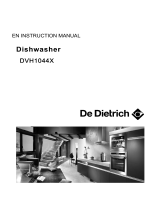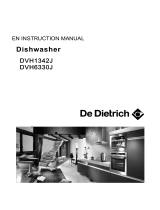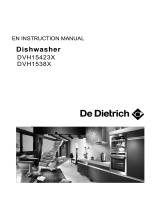
Reviewing the section on troubleshooting Tips
will help you to solve some common problems
by yourself .
Dear Customer,
Please carefully read this manual bef ore using the
dish washer, it w ill help you use and maintain the
dishwasher properly.
Pass it on to any subsequent owner of the applianc e.
This ma nual con tains sections on safety Instru ctions,
Operating Instru ction s, Installation Ins tructions and
Trou bleshoo ting Tips, etc.
The manufacture r, following a policy of con stant
dev elopment and updating of the product, may
make modifications without giving prior notice.
This user ma nual shall also be got from the
manufacturer or responsible vendor.
Keep this manual for future reference.
If you can not solve the problem s by yourself ,
please ask for the help of professional technicians.
1) Safety Instructions....................................1-4
2) Quick user guide..........................................5
3) Operating Instructions.................................6
4) Prior to first time use....................................7
5) Preparing and loading dishes.....................12
6) Starting a washing program.......................14
7) Maintenance and cleaning..........................16
8) Installation Instruction...............................18
9) Troubleshooting Tips.................................21
Loading the baskets according t o En50242
Control Panel....................................................6
Dishwasher Features.........................................6
A.Water Softener...............................................7
B.Loading the Salt into the Softener....................8
C.Filling the Rinse Aid Dispenser........................8
D.Function of Detergent.....................................9
Recommendations for loading and unloading
the dishwasher................................................12
Standard loading pattern..................................13
Wash Cycle Table............................................14
Turning on the Appliance..................................14
Changing the Program mi d-cycle.. ....................15
At the end of the Wash Cycle.............................15
Filter System...................................................16
Caring for the Dishwasher.................................17
Positioning the Appliance.................................18
About Power Connection..................................18
Water connection.............................................19
Start of dishwasher..........................................20
Before calling for service..................................21
Error codes ....................................................22
Technical information.......................................23

























